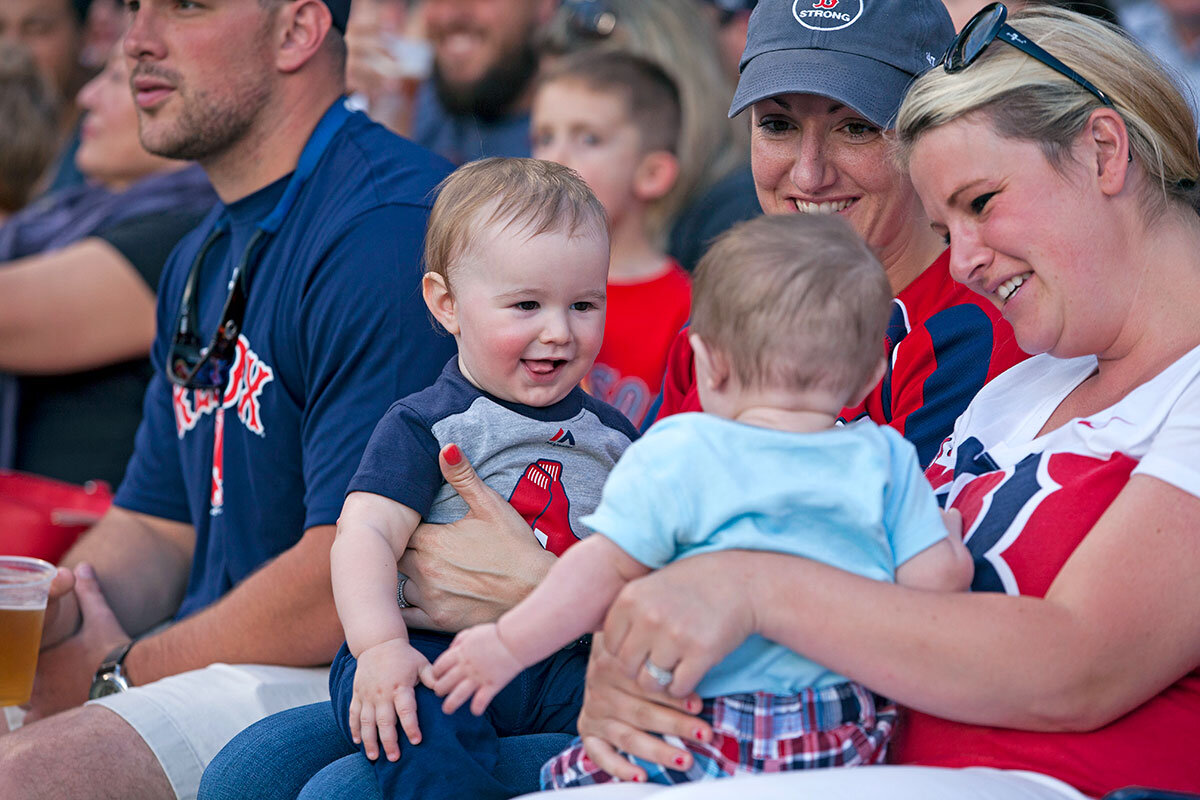What do babies and warring groups have in common? Altruism.
Loading...
Infants, it seems safe to say, are pretty selfish. They scream at you when you don’t give them attention. They reflexively grab everything – Dad’s teacup, Mom’s eyeglasses, Fluffy’s tail – within the reach of their chubby little arms. They demand to be held all the time. And, just when you think you’ve finally put them down for a nap, they start screaming again.
It’s no wonder, then, that the viewpoint that humans are essentially self-interested has enjoyed such over the centuries. But that perspective may be waning. And human kindness might be more deeply rooted than previously thought. A pair of studies published last week reveal altruism in surprising places: among babies and frequently warring groups.
“In the ‘80s and the ‘90s, there was an emphasis on highlighting the competitive side of human nature,” says Rodolfo Cortes Barragan, a postdoctoral fellow at the Institute for Learning and Brain Sciences at the University of Washington. “But the pendulum tends to swing in human knowledge. And so now ... I do think that the weight of the evidence is increasingly on the side of humans – and many animals – being very, very cooperative and altruistic in many ways.”
Why We Wrote This
Kindness is often considered something that humans have to learn. But displays of altruism in surprising places suggest there’s more to the story.
As for babies, they might not be as selfish as they first seem.
Dr. Barragan is the lead author of a study that looks at altruism among these drooling, tiny humans. He and his colleagues presented tasty, kid-friendly fruit – bananas, blueberries, and half-grapes – to hungry 19-month-olds. When they were paired with an unfamiliar adult who appeared hungry, more than half of them shared it with the stranger.
“[The babies] clearly were fascinated by the fruit. They were drooling all over it,” he says. “But, of course, many of them still shared.”
This study expands on earlier work that that babies as young as 18 months will, with very little prompting, open a door for unfamiliar grownups or retrieve an item that they dropped. Humans, it seems, become cued in to the apparent needs of others nearly from the get-go.
But is it genes? Or culture?
Today, a huge swath of apparently selfless acts in animals – from honeybee martyrdom to bat friendship – can be explained from a “gene’s-eye view,” from the perspective of chemical arrangements on DNA molecules whose sole purpose is to copy themselves. Evolutionary biologists often talk about altruism falling into two different camps. First there’s “,” in which apparent kindness to relatives helps promote your common genes. Then there’s “,” in which a tit for tat “you remove the insects from my back and I’ll remove the insects from yours” policy undergirds relationships between nonrelatives, or even among unrelated species.
This gene-centered perspective often suggests a dim view of our innate moral faculties. As Richard Dawkins put it in his 1976 book “The Selfish Gene,” “Let us try to teach generosity and altruism, because we are born selfish.”
But in recent years, scientists like Dr. Barragan have been taking a closer look at our species’s assumed selfishness. And it seems we may have more of a propensity for kindness and cooperation than previously thought.
Some observers have taken studies like his to mean that humans are inherently generous, that, alongside our selfish genes that promote cooperation only when it maximizes chances of replicating, we possess a “” that encourages kindness.
Or maybe not. Dr. Barragan and his colleagues, whose study last Tuesday in the journal Scientific Reports, found that not all of the infants were equal sharers. Those with siblings, the study found, were more likely to share than only children were. Babies from Asian and Latino families were also more likely to share. Compared with Europeans, these cultures are considered relatively “interdependent,” says Dr. Barragan.
“It’s very clear that some infants were more ready to help,” he says. “We don’t ascribe that to a genetic reason. We ascribe it to social experience.”
We seem to be the only species to routinely share high-value resources with strangers without an experimental mechanism, says Dr. Barragan. Chimpanzees, our closest living relatives, don’t readily share food like this, and certainly not with strangers.
None of this is to deny that our species’ distinct capacity for altruism is an evolved trait. But culture plays an essential role in making it happen.
“We’re all pastoralists”
Extraordinary acts of cooperation can emerge even in some of the world’s most challenging environments.
In northwest Kenya, life among itinerant livestock farmers is marked by violence. As land suitable for grazing vanishes due to climate change, they engage in dangerous armed cattle raids. But amid this deprivation and intergroup warfare, researchers have also counted acts of cooperation and altruism.
“It’s very hard to point to and to count and to be very empirical about the subtle ways that, on an everyday basis, we are cooperative,” says anthropologist Carla Handley, who has studied people in the region for 15 years. Her team at Arizona State University measured genetic relatedness and cultural variation across nine different clans spanning four ethnic groups in Kenya. Their were published in Nature Communications, also last Tuesday.
For instance, Dr. Handley says that members of the Borana people will sometimes approach members of one of their frequent antagonists, the Samburu people, to request water and pasture for their cattle.
“‘At the end of the day,’ people say, ‘we are all pastoralists,’” says Dr. Handley. “‘We suffer thirst in the same way. We all suffer hunger in the same way.’”
Finding common ground
This kind of complex, multilayered altruism – in which some resources, but not others, are shared depending on various cultural markers – cannot be explained entirely via kin selection, say the researchers. And, because these interactions are transient and with strangers, they can’t be entirely accounted for by a reciprocal altruism model, either.
Instead, the researchers propose that cultural group selection can explain our species’s unique propensity for altruism.
Cultural group selection posits that, as groups compete with one another, cultural norms that give a group a competitive edge will arise, and, much in the same way that beneficial physical traits are reinforced through competition, there might be a genetic basis. One of those cultural norms is cooperation.
“We need to understand it in its complexity,” says Sarah Mathew, an assistant professor in the School of Human Evolution and Social Change at Arizona State University. “Our capacity for culture is the product of genetic evolution.”
If humanity’s propensity for altruism was forged by intergroup competition, say the researchers, this could explain why, across cultures, humans feel obliged to cooperate with nonrelatives, so long as they exhibit the same cultural norms.
Our species’s cooperative dispositions, narrow as they may be, can be leveraged to address global problems like climate change, suggests Dr. Handley. The key, she says, is to find the universals.
“There are commonalities that can serve as stepping stones to bettering ourselves and solving large-scale issues,” she says. “That gives me hope.”





